Spend $50 and get FREE SHIPPING
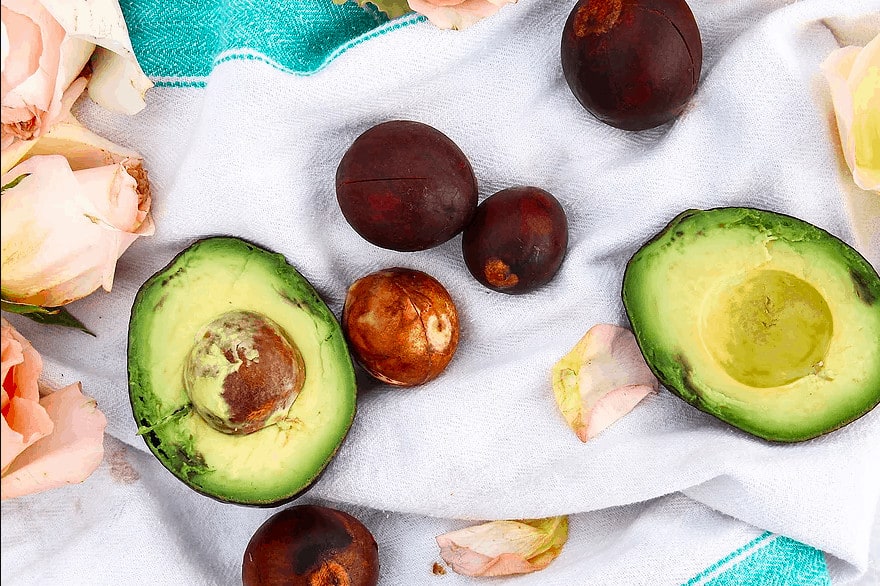
Avocado pits make pink dye? I love hearing this question. The world of natural dyes is mysterious and wonderful, and my favorite non-toxic material for making color is the humble avocado pit. It’s already there in the kitchen, not being used for anything, just waiting to be given over to dresses, linens, and scarves of the most beautiful blushey, rosey pinks.
If you’ve always been intrigued by natural dyeing, or are new to it and would like an easy intro, avocado pit dyeing is perfect for you. While some natural dyes can be complicated, finicky, involve heavy metals or special materials, avocado pits are food-grade and can be safely used as dye in your kitchen, in a pot you already own. Plus, the dyestuff is free and where it would normally go to waste, can just as easily be turned into a colorful weekend project. Free, non-toxic, saved from the trash, and doesn’t require any special knowledge or materials? I’m so in.
While dyeing with avocado pits, remember to not be too serious with measurements, trust your instincts, and have some fun! Read on for the easiest dye recipe you’ve ever seen:
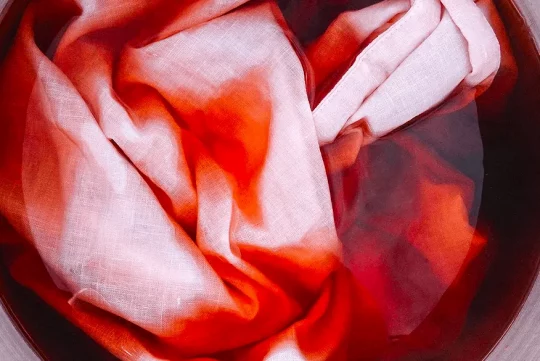
Avocado Pit Dye
Takes at least 2 hours and up to 2 days – but don’t worry! The majority of that time is spent away from the dye pot, much like a good stew.
What you’ll need:
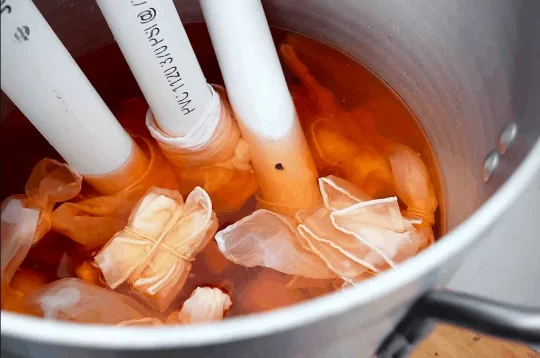
Directions:
You will want to read these ahead of time and plan on doing the different steps over a period of time. Do not attempt to dye as you go, because that would be silly. Instead, do steps 1&2 on Friday evening, then wake up late and begin with step 3 on Saturday mid-morning, and plan to get to step 4 only after you’ve eaten a nice lunch and moved into the afternoon. Just sit back, relax, and enjoy the process!
1. Weigh your materials: The amount of avocado pits you’ll need will weigh approximately half of the weight of your fabric. For example, the dress pictured below weighs 2lbs, so I used about 1lb of avocado pits to make the dye. If you can’t be exact, it is always better to add more pits. If you want a stronger color or just want to reassure yourself that this will work, by all means add more pits!
2. Scour fabric: You can simply throw it in the washing machine, or if your materials are more delicate, you can gently swish them around in warm water and a tiny bit of soap before rinsing.
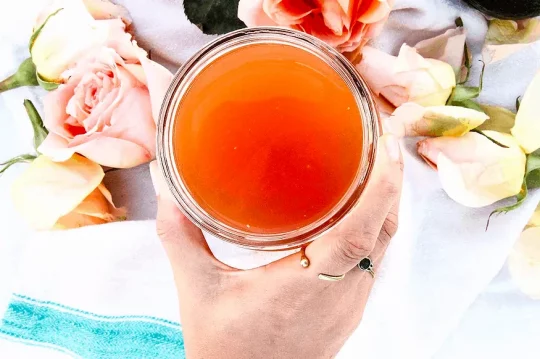
3. Extract the dye: First, fill up your large pot 2/3 full and set to boil (this will take a long time). While that’s boiling, place rinsed avocado pits in your small pot. Add enough water to fill the pot 2/3 full. Bring to a boil, then reduce to a very low simmer. Let this sit anywhere from 45 minutes to 5 hours, checking occasionally only to be sure that your water hasn’t boiled off and that you haven’t caused a fire in your apartment.
4. Get ready to dye: When your small pot of dye turns burnt orange to an intense ruby red, and your large pot of water is bubbling nicely, turn the large pot down to a low simmer and remove the small pot from heat. Using your strainer and extra bucket/bowl, strain the hot, red dye from the avocado pits. Add the pretty liquid to your large pot of hot water.
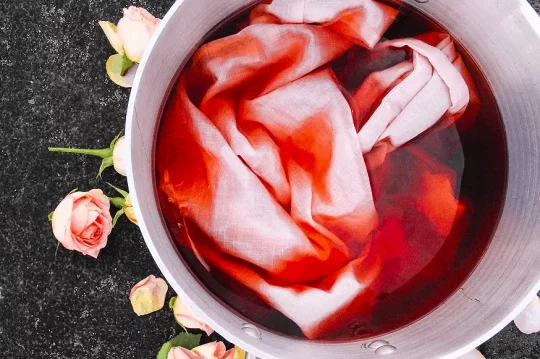
5. Prepare your materials: If you are doing some shibori, now is the time to tie off your fabric. There are many recommendations for simple, beautiful shibori techniques on the internet and in numerous books. Experiment with them all! Once your material is tied, or if you leave it free to dye all over, soak the fabric until every fiber is saturated with water.
6. Enter the dye bath: If your large dye bath has a deep red color by now, you can go ahead and plop your fabric in. If the color is still closer to rust or rose, let it simmer on very low heat for a while until it turns more distinctly red before adding your fabric. Once fabric is in the dye bath, gently stir it around. All of the materials should be submerged under the surface of the dye, and if any corners or bubbles pop up, gently push them down with your stirring instrument.
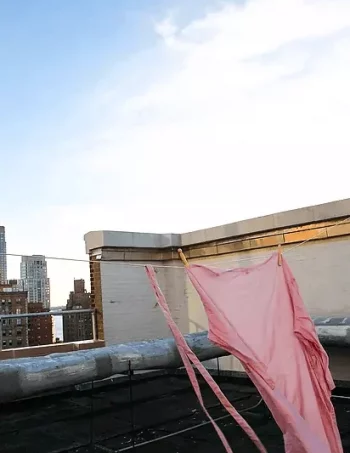
7. Relax & let the dye work it’s magic: Let your fabric and dye comingle undisturbed as you go about your day. Check in on it every half hour or so to gently agitate (stir) your fabric around and push anything down that may have popped up. You can agitate more often if you really want an allover, even color. But where is the fun in slaving over a dye pot for hours when you could be reading, or cooking, or taking a nap? Just make sure you don’t start a fire, and all will be well.
8. When to take it out: As you check in on your dye you’ll notice the fabric slowly taking on color. If you love the color you’ve got after an hour, by all means take your materials out. Same goes if you love the color you see after three hours. I like to let my dye pot simmer for up to 5 hours, then remove it from the heat and let everything sit overnight as it cools down. This will not be ideal for you if you want that allover even color. But if you, like me, appreciate surprises and can roll with whatever happy accidents may occur, this is an ideal way to dye. Whenever you do decide to remove your fabric from it’s colorful bath, you will want to rinse it in a bath of cold water then wring it out and hang to dry.
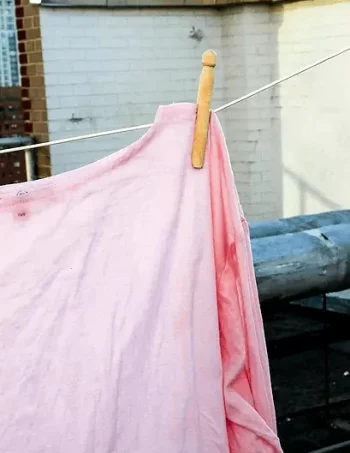
9. That was fun! Now you can do it again with the same dye bath. I love keeping my dye water and seeing what happens when I put a new piece of material in it and let it simmer away for another day. You can continue to use the dye bath until all of it is gone, or if the dye finally begins to give out and color no longer sticks to your fibers. If you don’t have time to do this right away, you can boil your dye bath down to an amount that will fit in a jar in your fridge and store that concentrate for adding to a new pot of water at a later date.
